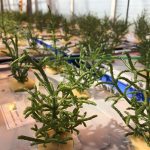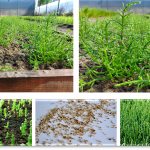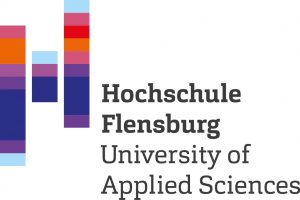Promising results from the AQUACOMBINE researchers
Two and a half year ago AQACOMBINE has been set out to find answers on one of the most important challenges of the 21st century.: How to meet the world’s demand for sustainably produced biomass for both food and the growing bio-products sector.
Therefore, AQUACOMBINE aim to create a new circular industry with co-production of food, feed, bio compounds, and bioenergy from salt-tolerant plants such as Salicornia or Crithmum with very little or no production of waste streams within the 4 years project time.
The approach of AQUACOMBINE´s is to combines aquaculture, farming, and bioprocessing to utilize all fractions of the produced biomass.
The last two and a half years were full of research, development, discussions, rethink, and further development. Now it is time to share the promising results of the studies.
Read more about:
Tripolium pannonicum, Salicornia spp., and Crithmum maritimum have a promising potential for use in soils degraded by salinity.
Salt concentration in the culture medium has different effects on biomass production of Tripolium pannonicum, Salicornia spp. and Crithmum maritimum.
Hydroponic cultivation of halophytes provides high biomass yields under optimal growing conditions.
Subcritical water extraction obtains the best extraction yield of phenolics without the use of chemicals.
15 bioactive compounds, including hydroxybenzoic acids, hydroxycinnamic acids, caffeoylquinic acids, and flavonoids could be analyzed by chromatography in residue straw of Salicornia.
Review of the availability of bioactive compounds from various salt-tolerant plant species, with a focus on Aster tripolium, Crithmum maritimum and Salicornia europaea.
First data indicates an overall effect of the bioactive cream to reduce histamine induced itch.
Preliminary results indicate a growth inhibitory effect.
Anaerobic digestion of Salicornia spp. achieved biomethane yields similar to that of green grasses and thus has the potential to serve as a feedstock for mono- and co- digestion.
Lignin polymer a recalcitrant residue turned into added value materials for filtering applications.
Use of a deep-water culture system (DWC) for year-round controlled production of Salicornia.
How will nutrients based solely on fish effluent water will affect the growth of Salicornia?
Can the loop between fish and plant production be closed?
Fermentation of the green juice of halophyte species with lactic acid bacteria could be a cost-efficient and safe method to separate proteins.
Centrifugation turned out as the best method to concentrate the nutrients from non-food succulent biomass of Salicornia. The resulting protein-enriched fraction can be included in the regular diet of fish.
Wastewater from aquaculture can be successfully used for irrigation of Salicornia ramosissima cultivation.
No detrimental effects on growth performance or survival, while providing some beneficial effects to their antioxidant and immune response.
S. ramosissima biomass can be included in diets for juvenile seabass up to 10% of their composition with no detrimental effects on growth performance or survival, while providing some beneficial effects to their antioxidant and innate immune response and promoting DNA integrity.
Knowing the effects of salinity on biomass composition allows optimisation of cultivation to increase production of the desired compounds.
Acknowledgement
This project has received funding from the European Union’s Horizon 2020 research and innovation programme under Grant Agreement No 862834. Any results of this project reflects only this consortium’s view and the European Commission is not responsible for any use that may be made of the information it contains.





































